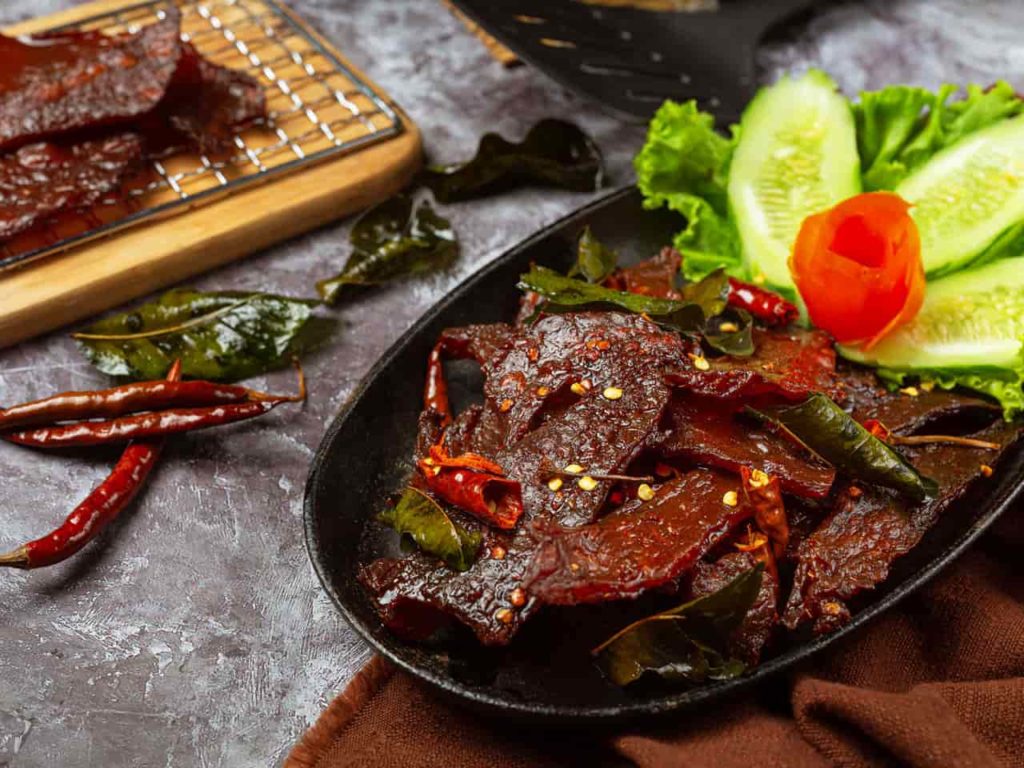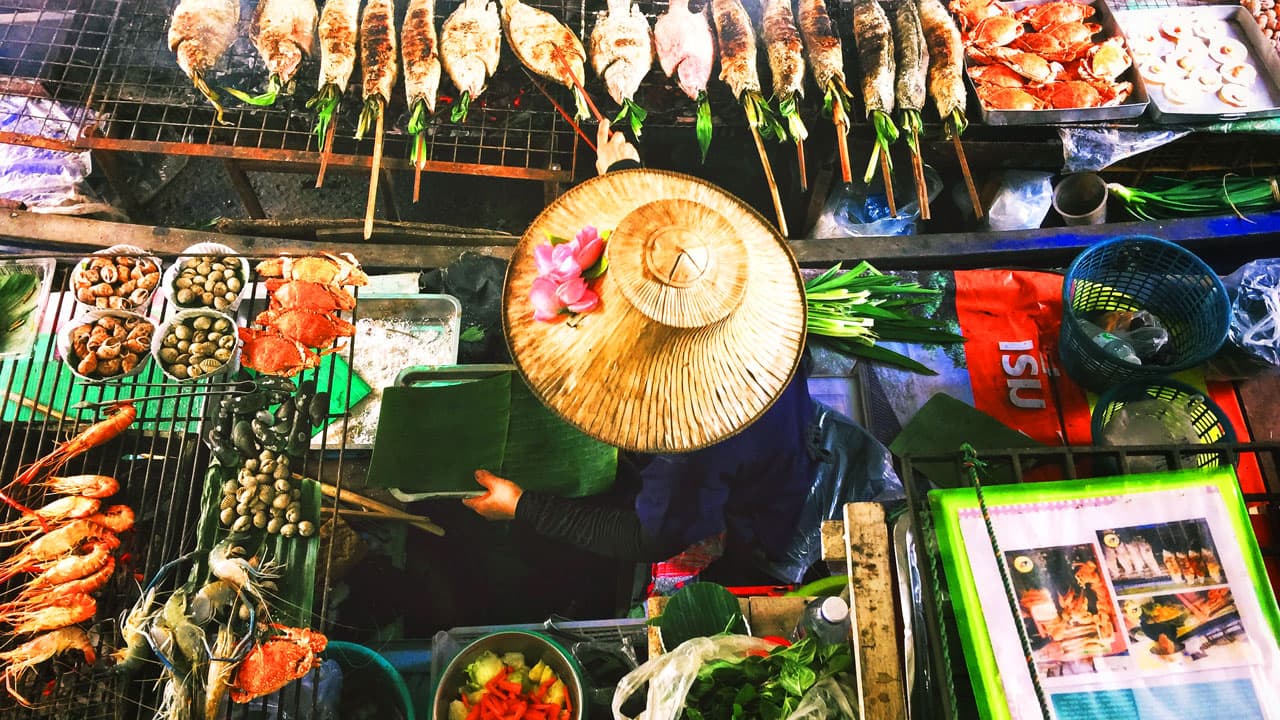Painting with Spice: Our Top Ten Isan dishes
Isan food is increasingly being recognized as not just the best of Thailand but one of the world’s greatest cuisines. What distinguishes Isan food from others is the enticingly complex flavours of the dishes. Yet most of the dishes are simple and easy to prepare. They were after all dishes designed to be prepared in corners of rice fields using only the ingredients at hand and prepared over an open fire.
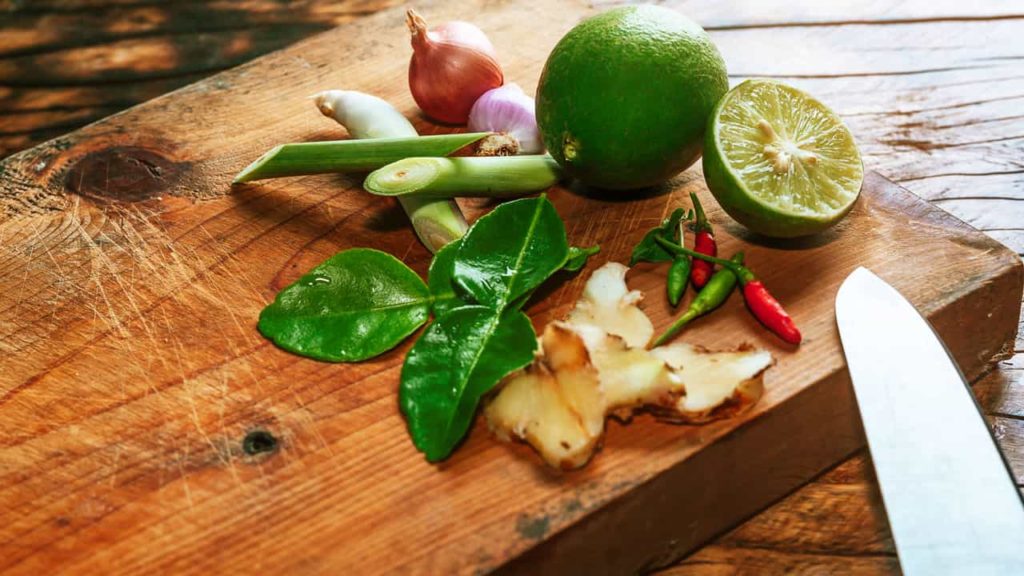
So what’s the secret?
Firstly buy fresh and cook fresh. When we prepare a meal for you most of the ingredients will have come straight from the farm and plucked that morning.
Secondly it’s about how to layer and blend the spices and ingredients together. A great artist can take simple colors and make a masterpiece. In the same way, when we cook Isan we are literally painting with spices. There is no recipe but just a traditional instinct on how to use what is in front of you to great amazing food sensations.
So please enjoy our top list of top food and discover a whole new cuisine today!
NAKARA SPECIALTY:
CHICKEN MASSAMAN CURRY
This is one of our most loved dishes by all our guests. Massaman originated in 17th century Central Thailand (so not strictly Isan) at the cosmopolitan court of Ayutthaya. The unique flavors of the Massaman curry paste (nam phrik kaeng matsaman) come from spices that are not frequently used in other Thai curries including cardamom, cinnamon, cloves, star anise, cumin, bay leaves, nutmeg and mace. In the 17 century these spices would have been imported from the Malay Peninsular meaning they would have been affordable only to the highest households making this a truly Rich and Royal meal. Do make our Massaman one of your first dishes when you stay with us. It’s absolutely delicious especially as we serve with our own freshly made flat breads.
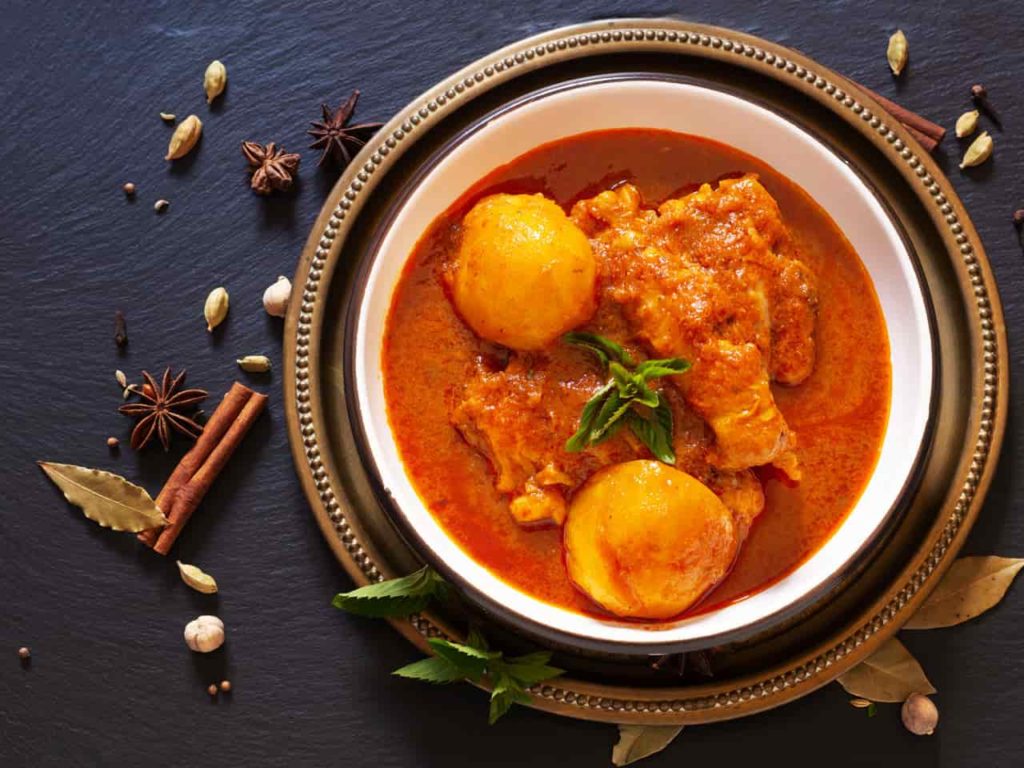
ISAN TOP TEN DISHES
1) PAPAYA SALAD / SOM TAM KORAT
The Isan region’s most iconic dish, this salad is made of shredded green papaya, tomatoes, long beans, garlic and other in-season vegetables in a lime-juice dressing. It’s traditionally pounded in a large stone mortar and pestle (the resulting sound, “pok pok,” has become a colloquial saying among foreigners) Som tum is now found throughout Thailand, with many regional variations and creative spin offs.
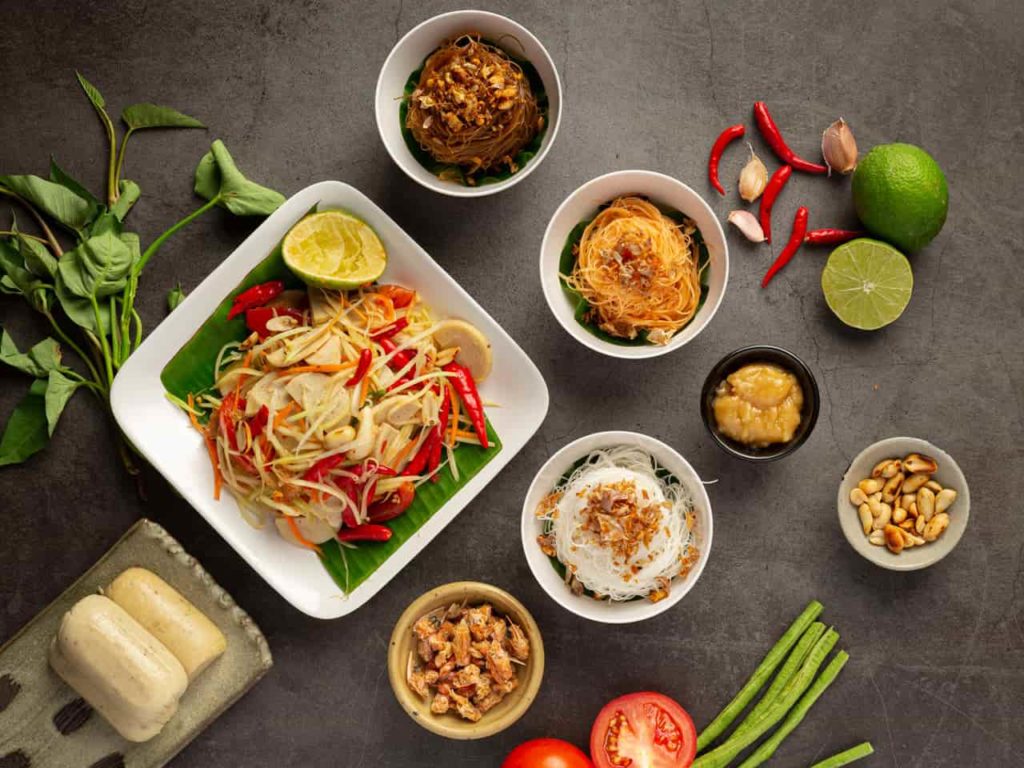
2) MINCED PORK SALAD / Laab Moo
Originating from Laos this fiery minced pork salad is the big favourite in Isan food. While there are variations the most popular Laab comes as a stir-fried minced pork dish with shallots, coriander and mint leaves. Seasoned with the salty of fish sauce and the sour of lime juice.
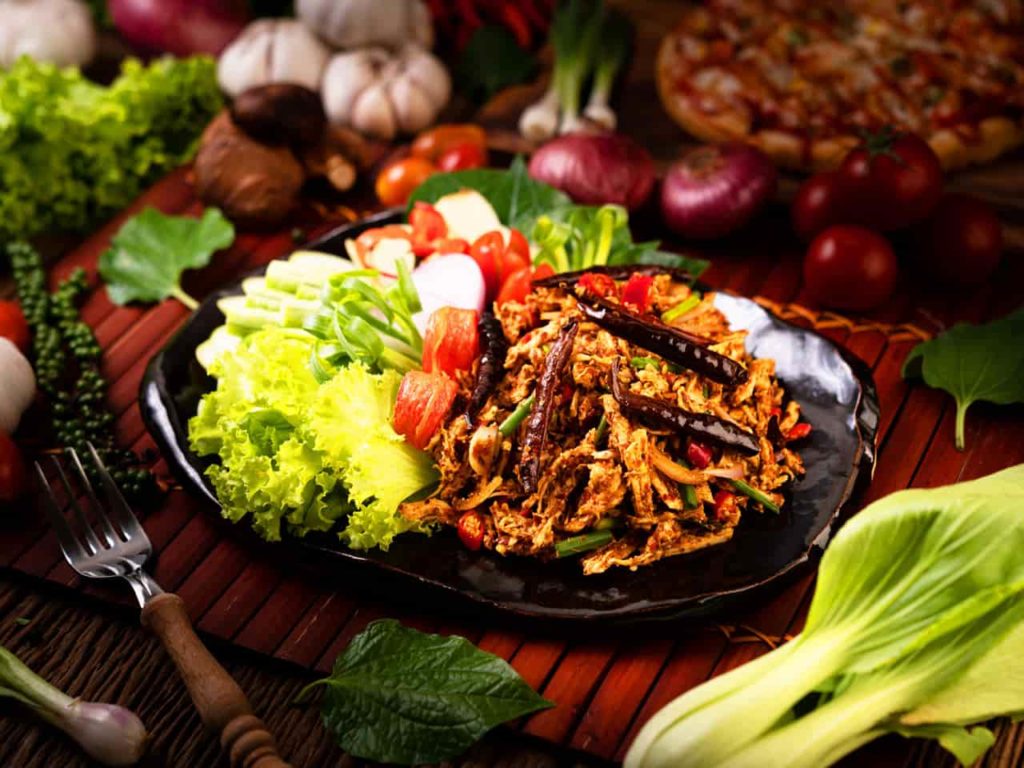
3) ISAN SAUSAGES / SAI KROK ISAN
Sausages are popular in both Northern and Northeastern Thailand, but this Isaan version made with pork and glutinous rice is now popular all over Thailand and South Eats Asia. Minced pork parts are typically mixed with garlic, salt and steamed sticky rice, piped into pig’s intestines, and then allowed to ferment until slightly sour while drying, which gives the meat a rich and funky flavor. The finished product is often grilled and served with vegetables and herbs such as ginger, cabbage, shallots and chiles.
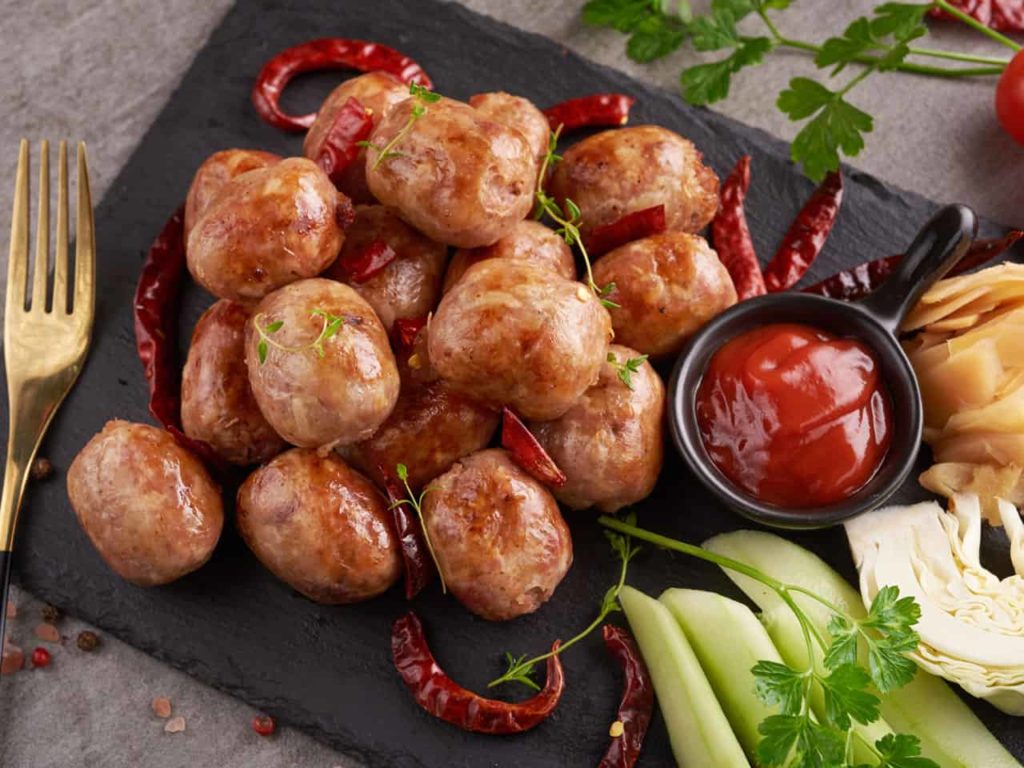
4) GRILLED FISH / PLA PLO
In Isan, the fish are gutted, stuffed with pandanus leaves and lemongrass then coated with flour and rock salt before taking a grilling over charcoal barbecues. Served with a fish sauce, lime and chilli dip. Eat the meat not the skin. There are three common freshwater fish found at evening Isan food barbecues: Tilapia (Pla Nin), catfish (Pla Duk Dam) and snakehead fish (Pla Duk Yan). Certainly some of the best fish we have ever eaten.

5) STICKY RICE / Kow Neuw
Most rice grown in the North East is Sticky Rice rather than Jasmine rice and it is served with almost every meal. This super-starchy staple is often presented in small, individual baskets. Eaters typically grab a lump of sticky rice with their fingers and use it in lieu of silverware to snap of chunks of whatever’s on the table – it’s particularly indispensable and delicious with larb. Tourists mainly recognise this rice from the sweetened ‘sticky rice with mango’ as a desert. At Nakara Villa we grow both our own Jasmine and Sticky rice and generally both are served with every meal.

6) GRILLED PORK NECK / Kor Moo Yang
A standard in road side bbqs, this dish uses perfect slices of pork neck, coated in a rich, sticky marinade, barbecued over charcoals and served with a sour, spicy side of chilli sauce (Nam Jim Jaew). Combined with a a sweet, sour, salty and hot salad and perfection this is many people’s absolute favorites.
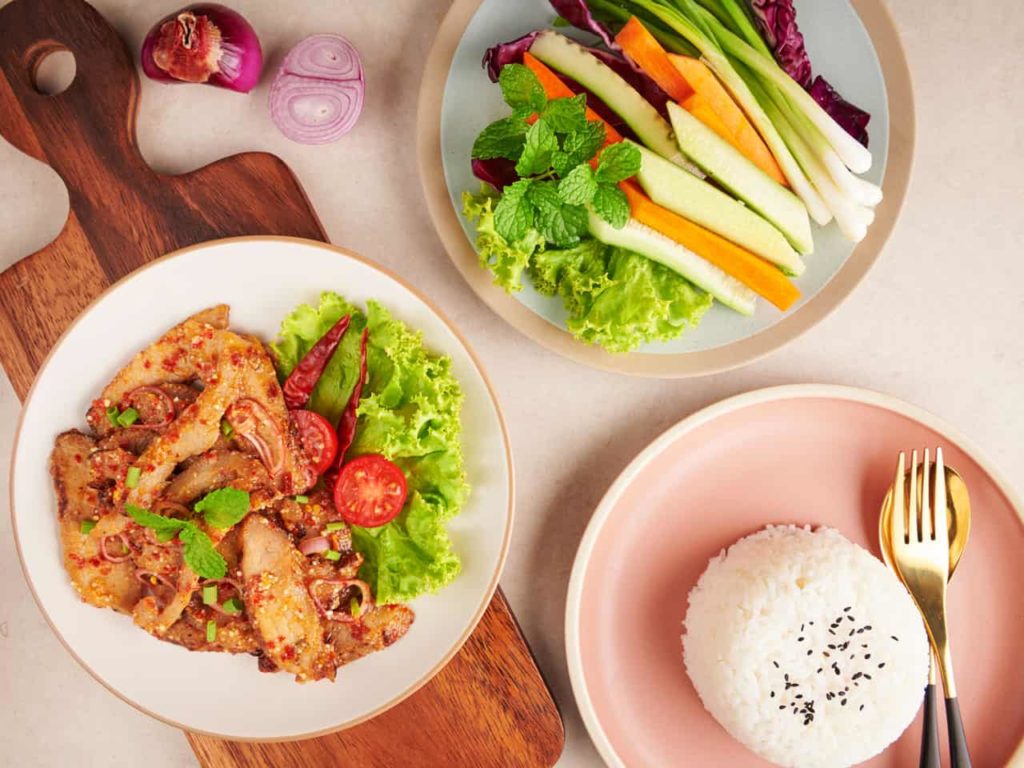
7) SPICY SOUP / Tom Saep
Soups are also served with most meals in Thailand. Most familiar to tourist are chicken coconut soup (Tom kha kai) and Spicy Fish Soup (Tom Yum). In Tom Yum, Tom refers to the boiling process, while Yam refers to a Thai spicy and sour salad. Tom Yum is characterised by its distinct hot and sour flavors, with fragrant spices and herbs generously used in the broth. The soup is also made with fresh ingredients such as lemongrass, kaffir lime leaves, galangal, lime juice, fish sauce, and crushed red chili peppers.
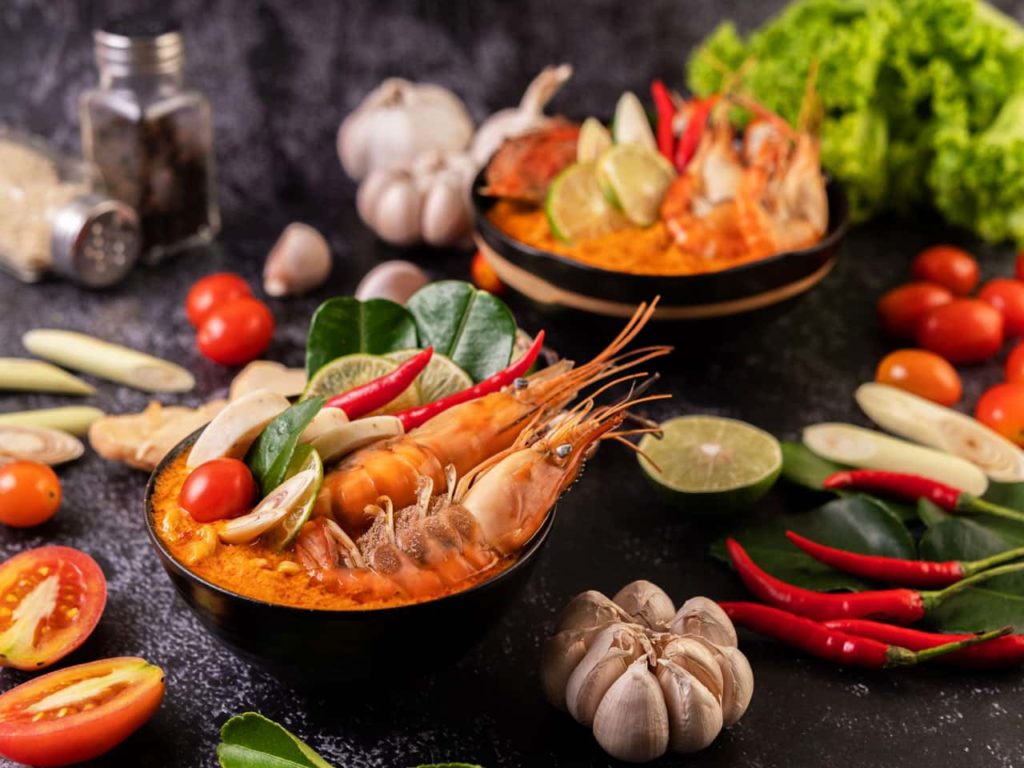
8) GRILLED CHICKEN / Gai Yang
You can’t talk about the foods of Northeastern Thailand without mentioning gai yang (grilled/roasted chicken). This charcoal-fired grilled dish is a staple of even the simplest Isaan kitchen. No two recipes are exactly alike, but generally lemongrass and garlic are almost always involved. The secret is to use only lean, flavorful and truly ‘free-range’ chickens. It is deceptively simple, but satisfyingly nuanced.
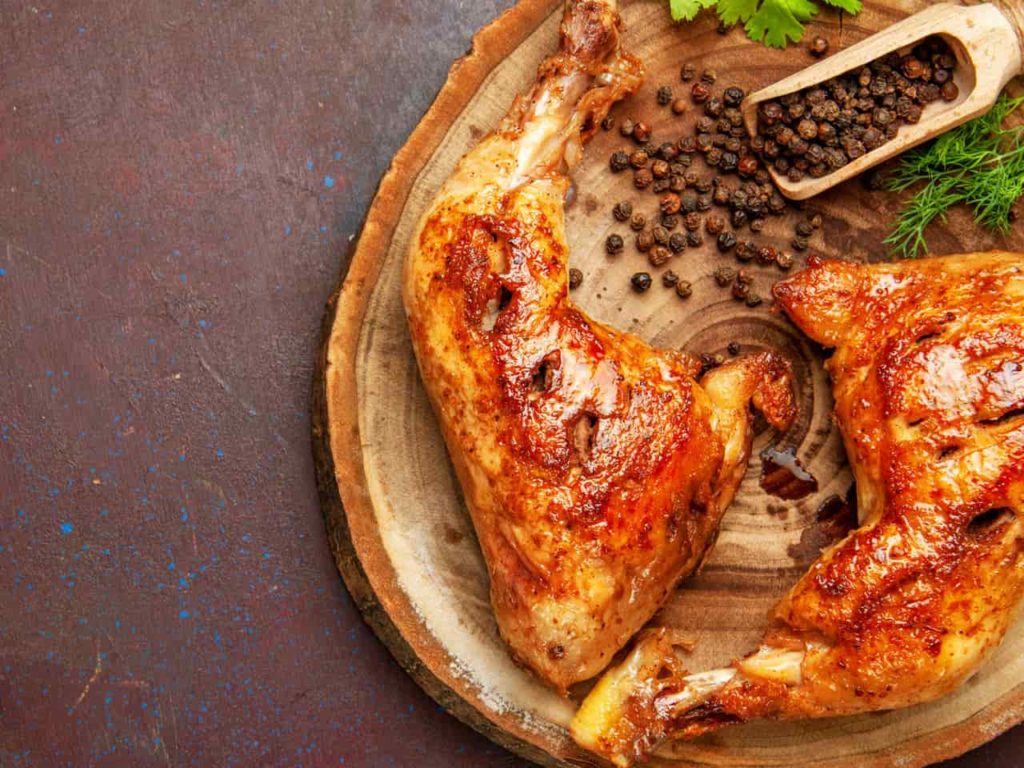
9) NOODLE SOUP / Hao Soi
Originally from Burma, this is a soup-like dish made with a mix of deep-fried crispy egg noodles and boiled egg noodles, pickled cabbage, shallots, lime, ground chilies fried in oil, and chicken/beef in a curry-like sauce containing coconut milk. The curry is somewhat similar to that of yellow or massaman curry but of a thinner consistency. Eaten daily in the North East but rarely found in Thai restaurants abroad.
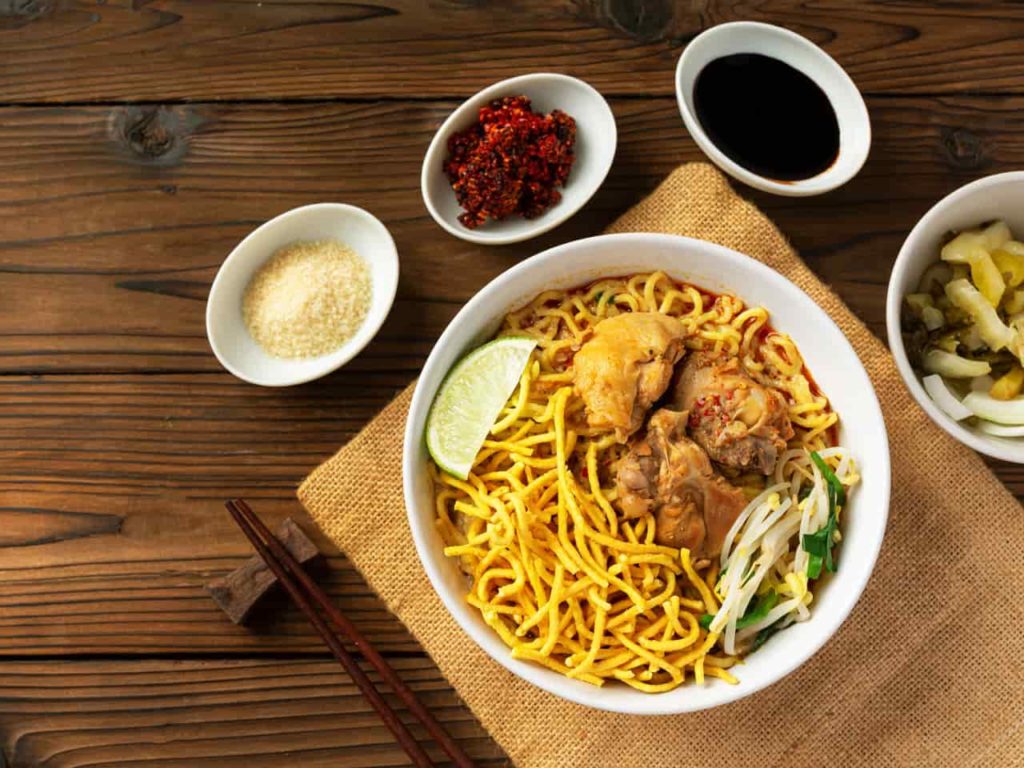
9) THAI HOT POT / Jim Jum
A spiced up Thai interpretation to the famous Chinese Hot Pot. Jim Jum, originating from Isan, uses a signature Thai infused broth of shallot, Lemongrass, Chilli, Garlic and Sweet Basil. Eaters then ‘cook’ their own meat, fish, tofu, vegetables, noodles or what ever else is at hand or in season. Once fully cooked the Jim Jum is served in small soup bowls and mixed with a hot, sour, tangy chilli sauce (Nam Jim).
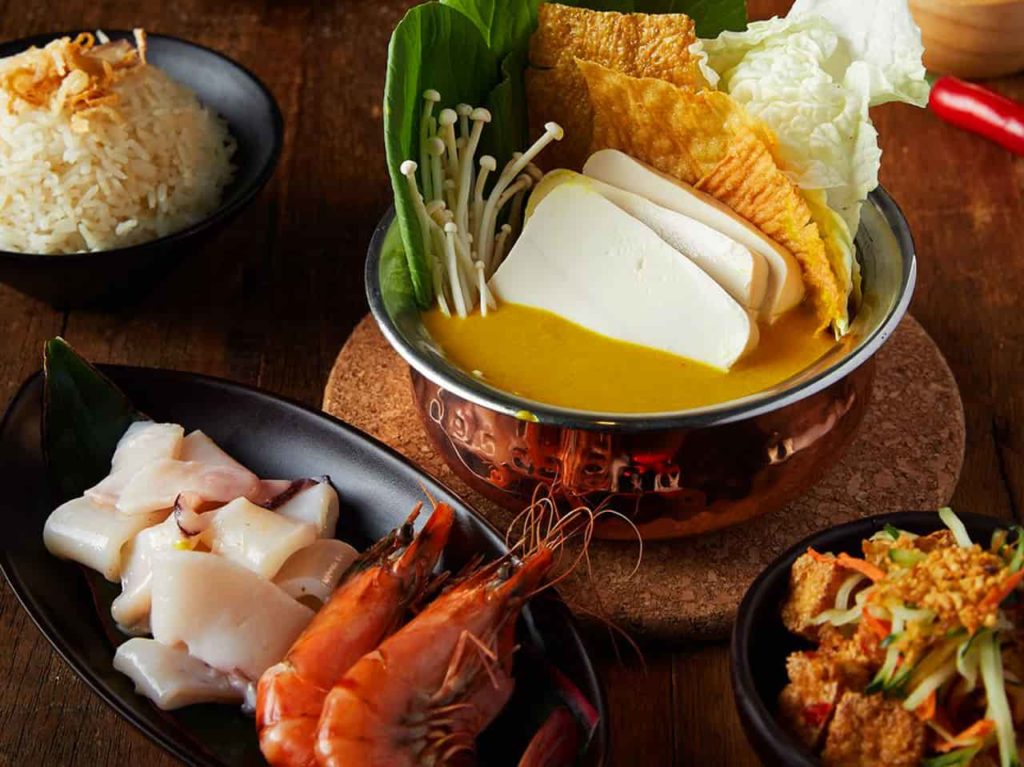
10) MARINATED PORK / Moo Dad Diew
If you like, the Thai equivalent to the delectable pork Jerky. Small bites of pork are marinated in dark soy, oyster sauce, garlic, pepper and palm sugar though also occasionally sprinkled with sesame seeds. The marinated pork is then left in the sun to dry in the sun. Before served the pork is then grilled to re-warm it and served with a sour and spicy chilli dip (Nam Jim Jaew). This is a street side favorite but the home cooked version is just as delightful.
